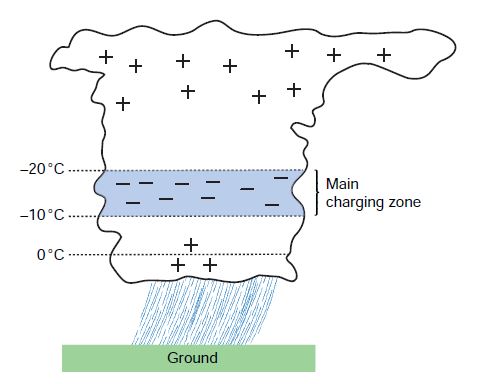
Most thunderstorms occur in cold clouds. An important observational result is that the onset of strong electrification (charge separation as shown above) follows the occurrence of ice precipitation (hailstones, graupel) in the cloud. These ice particles are called the rimer .
After the rimer falls through the cloud it becomes negatively charged due to collisions with small particles (droplets or ice) in the cloud. This gives rise to the negative charge in the main charging zone (as shown above).
The corresponding positive charge is imparted to the (generally smaller) cloud particles as they rebound from the rimer collision and these positively charged particles are carried upwards by updrafts.
The physical details of this process remain unknown and many ideas are not able to predict the observed rate of charge
generation. The collision process appears to be very efficient
in inducing charge separation and this is not well understood.
For example, let's say the rate of charge generation in a thunderstorm is observed to be q = 1 C km-3 hr-1.
Let's determine the electric charge that would have to be separated for each collision of an ice crystal with a rimer to explain this observed rate.
Assumptions:
- Ice crystal have concentration of 105 m-3; collision efficiency = 1;
- rimers are spheres of radius 2 mm and density of 500 kg m-2
- precipitation rate due to the rimers if 5 cm per hour of water equivalent.
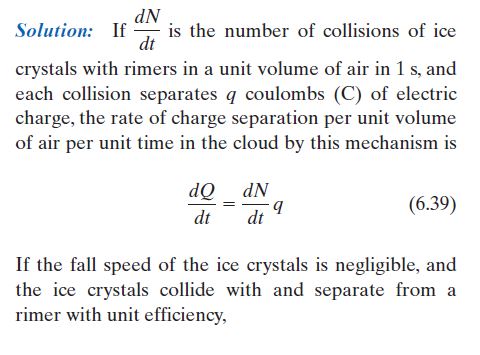
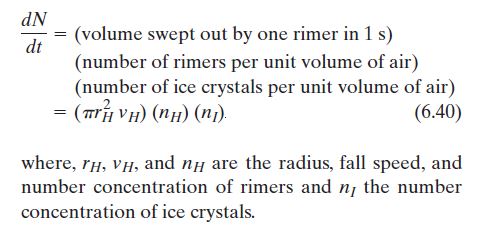
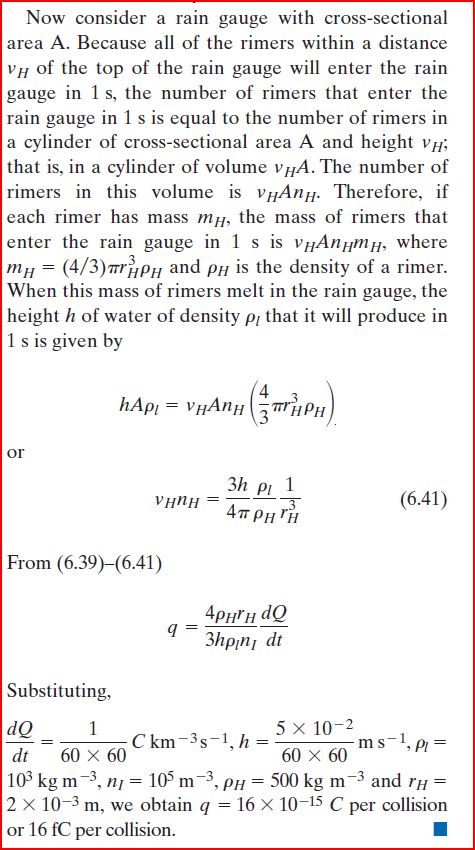
Sequence of events for lightning:
- Negative charge moves downward from the lower main negative charge center in discrete steps that last about 1 micro second and each step advances down about 50 meters.
- The time interval between these steps is about 50 micro seconds
- This process is initiated by the small pocket of positive charge at the cloud base.
- The discharge releases electrons that were previously attached to precipitation particles.
- This free charge overwhelms the once positive pocket and the base of the cloud now becomes negative (inducing positive charge on the ground)
- A discharge now moves from the positive ground to the cloud (this is rarely observed) in about 100 microseconds
- Then the return stroke to the gound is full of lots of electrons and is the bright lightning flash, typically 30,000 amps!
- return stroke heats the air through which it passes to about 30,000 K in a few microsecond so air has no time to expand in response to "conserve" ideal gas law (equilibrium). So pressure in the channel increases instantaneously
to 10-100 atm. High pressure channel expands rapidly into surronding lower Temperature air creating a supersonic shock wave which eventually generates the sound wave, known as thunder.
This sequence is schematically shown below
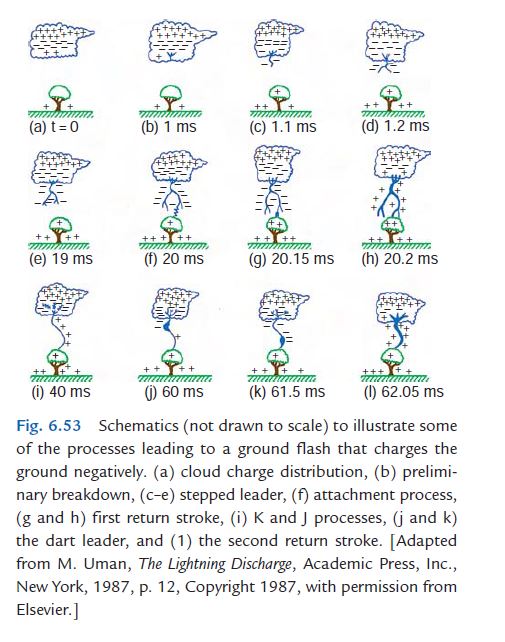
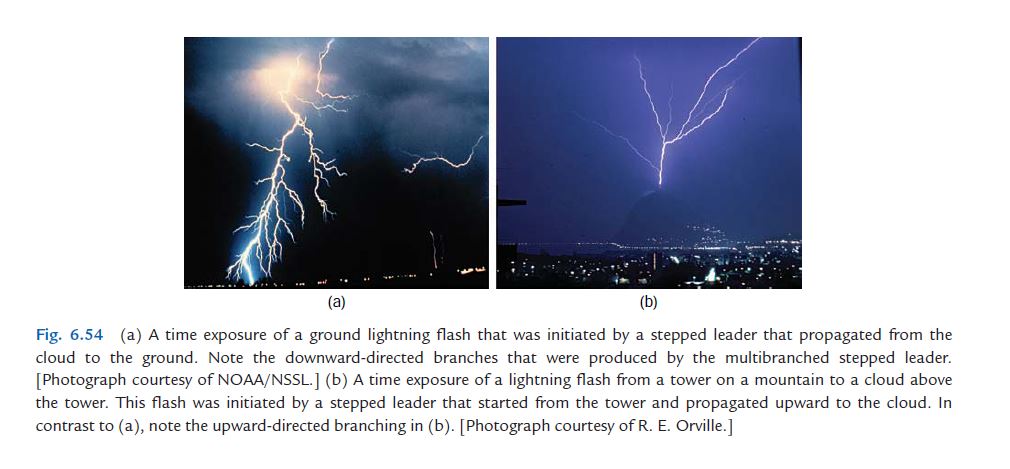
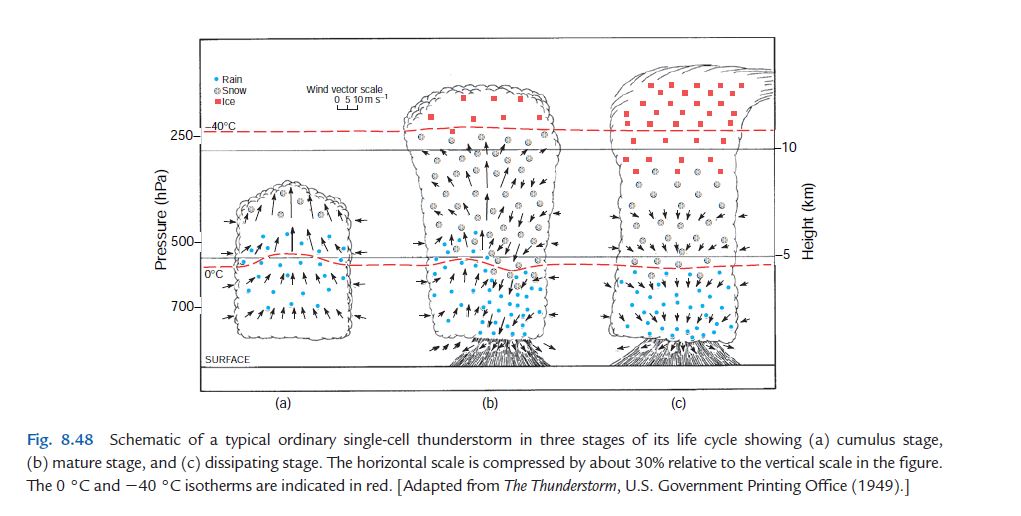
|